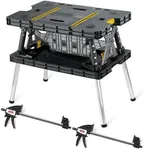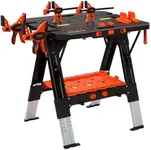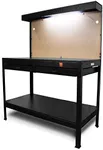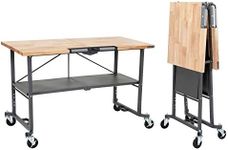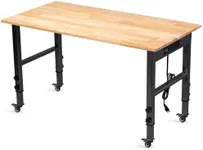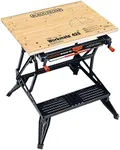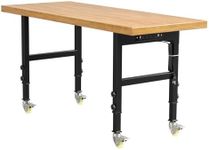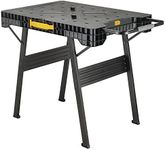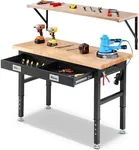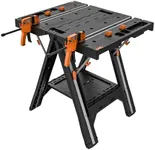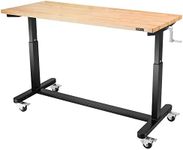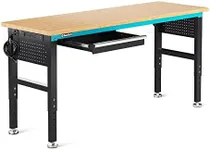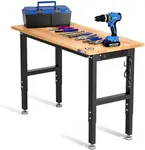Buying Guide for the Best Portable Workbench
Choosing the right portable workbench can make a significant difference in your DIY projects or professional tasks. A portable workbench is a versatile and convenient tool that provides a stable surface for various activities such as cutting, drilling, sanding, and assembling. When selecting a portable workbench, it's essential to consider several key specifications to ensure it meets your needs and enhances your productivity.Weight CapacityWeight capacity refers to the maximum load the workbench can support. This is important because it determines the types of projects you can undertake without damaging the bench. Workbenches with lower weight capacities (up to 200 lbs) are suitable for light tasks like small crafts or light woodworking. Medium capacity (200-500 lbs) is ideal for more substantial DIY projects, while high capacity (over 500 lbs) is necessary for heavy-duty tasks and professional use. Choose a weight capacity based on the heaviest items you plan to work with.
Work Surface SizeThe work surface size is the area available for you to work on. A larger surface provides more space for bigger projects and multiple tools, while a smaller surface is more compact and easier to transport. Small workbenches (less than 24 inches wide) are great for tight spaces and portability. Medium-sized surfaces (24-36 inches wide) offer a balance between space and portability, and large surfaces (over 36 inches wide) are best for extensive projects requiring ample space. Consider the typical size of your projects and your workspace when choosing the work surface size.
PortabilityPortability refers to how easy it is to move and transport the workbench. This is crucial if you need to frequently move the bench between different locations. Lightweight workbenches (under 20 lbs) are highly portable and easy to carry, making them ideal for on-the-go tasks. Medium-weight benches (20-40 lbs) offer a good balance between stability and portability. Heavier benches (over 40 lbs) are more stable but less portable. Think about how often you will need to move the workbench and choose accordingly.
AdjustabilityAdjustability includes features like adjustable height and tilting work surfaces. These features enhance comfort and versatility, allowing you to customize the bench to your specific needs. Basic models may have fixed heights, suitable for standard tasks. Adjustable height models are great for ergonomic comfort, especially if you switch between sitting and standing. Tilting surfaces are useful for tasks that require different angles. Consider the types of projects you do and whether adjustability will improve your workflow.
MaterialThe material of the workbench affects its durability, weight, and stability. Common materials include wood, metal, and plastic. Wooden workbenches are sturdy and provide a traditional feel, but they can be heavy. Metal workbenches are durable and often have higher weight capacities, making them suitable for heavy-duty tasks. Plastic workbenches are lightweight and resistant to weather, ideal for outdoor use. Choose a material based on the durability you need and the environment in which you will use the workbench.
Clamping SystemA clamping system helps secure your workpieces, providing stability and precision. This is important for tasks that require steady hands and accurate cuts. Basic workbenches may have simple clamps or no clamping system at all, suitable for general use. Advanced models feature integrated clamping systems with multiple clamps and adjustable positions, ideal for complex projects. Consider the complexity of your tasks and whether a robust clamping system will enhance your work.
